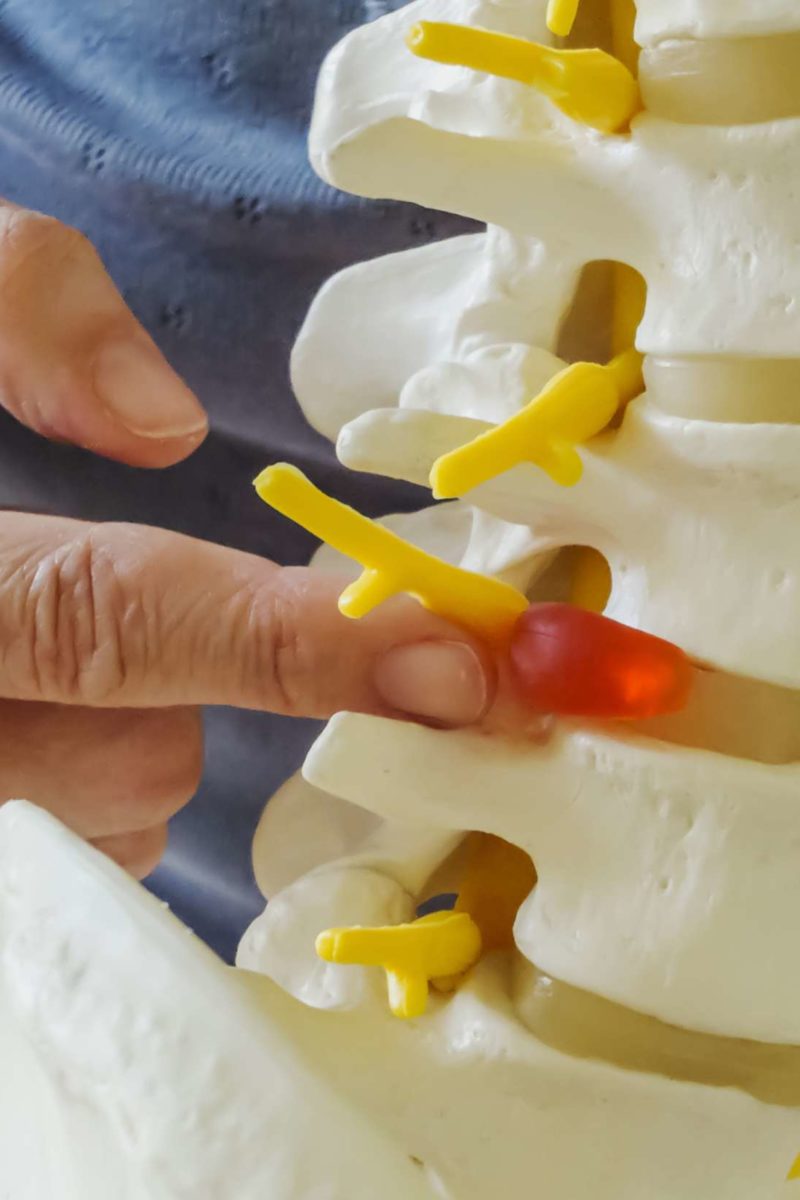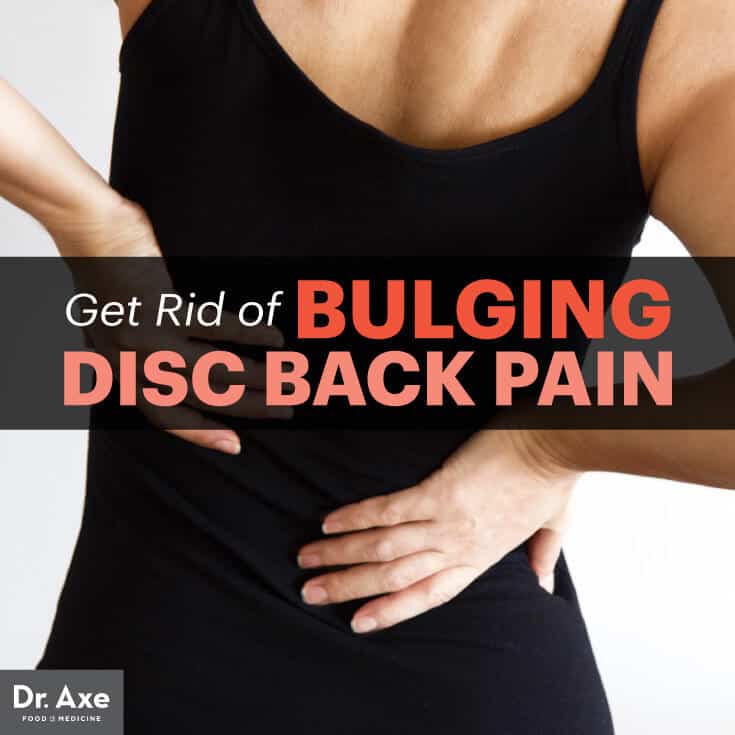With aging, discs tend to lose water which can lead to disc degeneration. Unlike the muscles and organs of our bodies, the intervertebral disc has no blood supply. This means that for a disc to receive necessary nutrition (and for wastes to be carried away), it must rely on the flow of water, as well as other mechanical means, to stay healthy. A bulging disc is a medical condition that develops over long periods of time. Although seen more often with aging, it can happen to younger people as well. There are few if any symptoms and early identification is only possible through medical testing and scans that show changes in disc shape and positioning. Some may experience sensations.
Herniated disc pain in your lower back can range from a mild ache to a shock-like pain that radiates into your leg. While most herniated discs gradually start to feel better within a few weeks, many common activities may inflame and worsen the pain. Here are a few activities to avoid.
See Lumbar Herniated Disc: What You Should Know
Sitting puts extra stress on your spinal disc and can exacerbate lumbar herniated disc symptoms.
ReadLumbar Herniated Disc Symptoms
Sitting too much
Sitting puts more stress on your spinal discs, especially when slouching forward in a seat.1 To minimize pain from a herniated disc in the lumbar spine (lower back), try to stand up, move around, or lie down when possible.
Since sitting is often unavoidable, try these tips to reduce the load placed on your lumbar spine.
- Sit up straight with your shoulders rolled back towards the chair and shoulder blades down.
- Keep thighs about horizontal with the floor (hips should not be lower than your knees).
- Use a small pillow or rolled-up towel to support your lower back.
- Set a reminder on your phone to take breaks often and walk short distances.

If your job requires long hours at a desk or computer, consider using a sit-stand desk which allows you to stand intermittently throughout the day.
See Office Chair: How to Reduce Back Pain?
Doing laundry
Between bending down to pick up clothes, carrying a heavy basket, and reaching for various items, doing laundry puts a lot of pressure on your lower back. If possible, ask a friend or family member to help carry out this task until your back feels better. Many dry cleaners also offer a regular laundry service.
See Avoid Back Injury with the Right Lifting Techniques
Vacuuming
The repetitive forward-lunging motion typically used to vacuum the floor can irritate your herniated disc. Instead of extending your arm and bending your back, keep your back straight and walk the vacuum across the floor. Think of your legs doing the work instead of your arms. Another option would be to buy a robot vacuum cleaner to do the work for you. With this device, you can set it and forget it.
Feeding a pet

It may seem like a simple task, but bending down to fill your pet’s bowl with food and water is enough to cause a painful flare-up. If you’re unable to delegate this responsibility to someone else, purchase a specialty pet bowl equipped with an extended tube or built-in reaching aid. If you must lean over, keep one leg extended like a golfer would while picking up a golf ball—this takes stress off the lower back by keeping your alignment straight.
Strenuous exercise
While exercise is still recommended, avoid high-impact activities or other movements that place too much stress on your spinal discs.
- Stay away from activities that cause repetitive loading on your lower back, such as running or jumping rope.
- Skip movements that involve significant axial loading on the lower back, such as squats and leg presses.
- Avoid toe-touches, sit-ups, and yoga poses that worsen the pain and lead to significant bending of the back.


See Exercise for Sciatica from a Herniated Disc
Instead, try aerobic exercises, such as swimming and walking. Using a stationary bike can be an excellent source of exercise while recovering from a herniated disc. Hiking, especially up hills, can also be good. Aerobic exercise increases the flow of blood, nutrients, and oxygen to the soft tissue in the back, which can improve healing and reduce pain.2 You can also try strengthening exercises approved by your doctor or physical therapist.
Watch Video: 2 Walking Tips to Avoid Sciatica Pain
Low-impact exercises are generally easy and can be done on a regular basis. If these exercises are still uncomfortable, try aquatic therapy by simply walking in a pool. The buoyancy of water helps reduce pain during joint movements. Some evidence suggests that aquatic therapy may also help improve functioning in the lower back.3
See Water Therapy Exercise Program
Shoveling snow or gardening
Shoveling snow and gardening can worsen your disc pain, as it often involves heavy lifting, forward-bending, and twisting—motions that easily aggravate your discs. With snow, use a snowblower if you can, or get help from a neighbor. With gardening, try to avoid repetitive bending and stooping. Instead, stay in one position and vary your posture. If it is painful, the garden will have to wait another week. Giving yourself time to heal will allow you to be more independent in the long run.
See Snow Shoveling Techniques to Prevent Low Back Injuries
What Food Is Good For Disc Bulge

Commit to using good, supportive posture to help relieve pressure on your spinal discs and nerves. If your back pain does not resolve with these tips and techniques, call your doctor or health care provider.
Learn more:
Food For Disc Bulge Syndrome
References
Food For Disc Bulge Treatment
- 1.Alamin TF, Agarwal V, Zagel A, Qeli A. The effect of standing vs. variants of the seated position on lumbar intersegmental angulation and spacing: a radiographic study of 20 asymptomatic subjects. J Spine Surg. 2018;4(3):509–515. doi:10.21037/jss.2018.08.03
- 2.Gordon R, Bloxham S. A Systematic Review of the Effects of Exercise and Physical Activity on Non-Specific Chronic Low Back Pain. Healthcare (Basel). 2016;4(2):22. Published 2016 Apr 25. doi:10.3390/healthcare4020022
- 3.Shi Z, Zhou H, Lu L, et al. Aquatic Exercises in the Treatment of Low Back Pain. American Journal of Physical Medicine & Rehabilitation. 2018;97(2):116-122. doi:10.1097/phm.0000000000000801
